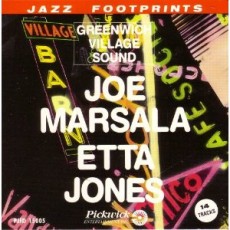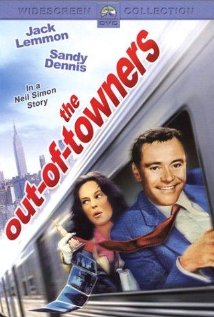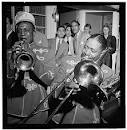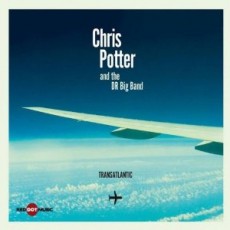
Daily Dose Of Jazz…
Joe Marsala: A Clarinet Voice That Bridged Two Eras
Born in the vibrant jazz landscape of Chicago on January 4, 1907, Joe Marsala picked up the clarinet as a young boy and never looked back. What emerged was a distinctive voice—one that would help shape the sound of American music across multiple decades.
Beyond Dixieland
While Marsala came of age during the big band era and shared stages with traditional “Dixieland” musicians, his musical vision reached far beyond convention. His playing was richer, more graceful, and decidedly more adventurous than many of his contemporaries—a style he credited largely to the influence of the masterful Jimmy Noone.
As a bandleader, Marsala helmed ensembles with memorable names like “His Chosen Seven” and “His Delta Four.” He had an eye for talent, too: he was among the first leaders to recognize the explosive potential of a young drummer named Buddy Rich. Throughout his career, Marsala collaborated with an impressive roster of musicians including Joe Buskin, Jack Lemaire, Carmen Mastren, and even the legendary Etta James.
A Pioneer for Integration
Beyond his musical contributions, Marsala stood on the right side of history. During the 1940s, he was at the forefront of breaking down racial barriers in jazz, working alongside Dizzy Gillespie and other Black musicians at a time when such collaborations required both courage and conviction.
Reinvention and Resilience
As bebop swept through the jazz world, Marsala faced a harsh reality: clarinetists were increasingly sidelined in the new sound. Work became scarce, both on stage and in the studio. But rather than fade away, Marsala reinvented himself.
He turned his creative energies to songwriting, crafting what we now call classic pop standards. His compositions found their way to two of the era’s biggest voices: Frank Sinatra and Patti Page. Songs like “Don’t Cry, Joe” and “And So To Sleep Again” showcased a different side of his artistry—proof that a true musician can adapt without losing their soul.
Despite battling chronic colitis throughout his later years, Marsala continued contributing to American music until his passing on March 4, 1978, in Santa Barbara, California. His legacy remains a testament to versatility, courage, and the enduring power of a clarinet played with grace and conviction.
More Posts: bandleader,clarinet,history,instrumental,jazz,music

Jazz In Film
The Out-Of-Towners is a 1969 film directed by Arthur Hiller and it starred Jack Lemmon and Sandy Dennis. Quincy Jones composed the music score.
Up for a promotion, George Kellerman with wife Gwen are being flown to New York City on an all expenses paid trip to interview with the top brass. They plan to arrive the night before to enjoy dinner and a show but the plane gets diverted to Boston. George’s carefully planned dream trip turns into a nightmare which features, among other misadventures, a hellish train ride to New York, a mugging, a police chase and a broken tooth.
More Posts: film

Daily Dose Of Jazz…
Isao Suzuki: From Tearful Awakening to Jazz Mastery
On January 3, 1933, in the bustling heart of Tokyo, a future jazz legend was born—though Isao Suzuki wouldn’t discover his destiny until years later.
A Moment That Changed Everything
As a college student, Suzuki attended a concert that would alter the course of his life. When he heard the masterful bass lines of Milt Hinton flowing through the venue, something profound stirred within him. Moved to tears by the instrument’s soulful voice, he knew what he had to do. He asked his mother for what seemed like an unusual gift: a double bass.
Fortune smiled on the young musician—his ability to read music became his passport to rapid progress. Within months, he was skilled enough to land his first professional gig at a Tokyo strip club. In 1950s Japan, these venues were unexpected incubators of jazz talent, regularly employing skilled musicians to create the soundtrack for their shows.
Learning from the Americans
Suzuki’s big break came when he joined a group led by Tony Tekiseira, an American G.I. guitarist stationed in Tokyo. Over four transformative years, he absorbed everything he could from the American musicians who passed through, building both his chops and his confidence night after night.
By 1960, Suzuki had become a sought-after player in Tokyo’s jazz scene. He performed with drummer George Kawaguchi’s Big Four (featuring special guest Sadao Watanabe) and joined clarinetist Tony Scott’s band, which eventually evolved into the Hidehiko Matsumoto Quartet. When the group played at the first World Jazz Festival in 1964, Suzuki found himself meeting his heroes: Miles Davis, Wynton Kelly, and most significantly, the legendary bassist Paul Chambers—a connection that deepened his understanding of his instrument.
Crossing the Pacific
The mid-1960s saw Suzuki working with the Sadao Watanabe Quartet before he became bandleader of the house ensemble at Tokyo’s Five Spot. There, he backed or performed alongside visiting luminaries like Oscar Peterson, Horace Silver, Wynton Kelly, and Art Blakey. When Blakey invited him to join the Jazz Messengers in 1970, Suzuki didn’t hesitate—he packed his bass and headed to New York.
That pivotal year in America reads like a jazz musician’s dream: Suzuki worked and recorded with Thelonious Monk, Charles Mingus, Ella Fitzgerald, Bobby Timmons, Jim Hall, Ron Carter, Sun Ra, and countless others. He was living inside the music he’d once cried over as a college student.
Full Circle: A Master Returns Home
When Suzuki returned to Japan, he brought with him a wealth of experience and a mission. He performed and recorded with Brazilian guitar master Baden Powell and continued pushing the boundaries of his art. Over the decades, he evolved into something far greater than “just” a bassist—he became a multi-instrumentalist, composer, arranger, producer, bandleader, and eventually, a revered grand master of jazz.
Perhaps most remarkably, Suzuki never stopped nurturing the next generation. Through his band Oma Sound, he has consistently enlisted young musicians, mentoring them while keeping his own sound vibrantly progressive and contemporary. The college student who once wept at the beauty of a bass solo has spent a lifetime ensuring that jazz in Japan remains alive, innovative, and deeply felt—just as it was on that transformative day when he first heard Milt Hinton play.
Today, Isao Suzuki’s legacy continues to resonate, proving that one moment of musical revelation can echo across decades and continents.
More Posts: bandleader,bass,history,instrumental,jazz,music

Daily Dose Of Jazz…
Henry Goodwin: A Globetrotting Trumpet Voice of Early Jazz
Born in the nation’s capital on January 2, 1910, Henry Goodwin was a musical explorer from the start. As a young boy in Washington, D.C., he didn’t limit himself to just one instrument—he experimented with drums and tuba before the trumpet ultimately captured his heart.
A Teenage Talent Goes International
Goodwin’s talent blossomed early. By 1925, while still a teenager, he was already performing professionally with the bands of Sam Taylor and Claude Hopkins. His youthful career took a dramatic turn at just 15 years old when he traveled to Europe with Hopkins as part of the glamorous Josephine Baker Revue. Though the adventure led him to Berlin, the pull of home proved stronger, and young Henry made his way back to New York.
A Life of Musical Adventure
What followed was a career marked by constant motion and collaboration. Goodwin soon found himself sailing to Argentina with Paul Wyer’s ensemble. Upon returning to New York, he worked with Elmer Snowden and laid down tracks with Cliff Jackson’s Krazy Kats. In 1933, Europe called again—this time with Lucky Millinder—before Goodwin returned stateside to perform with Willie Bryant and settle into a two-year tenure with Charlie Johnson.
The late 1930s brought new chapters: a brief but memorable stint with the legendary Cab Calloway, followed by three years with Edgar Hayes. Finding a comfortable artistic home with Sidney Bechet’s distinctive style, Goodwin went on to collaborate with Cecil Scott, Gene Sedric, and Art Hodes. His freelancing years included a memorable return to Europe for the Nice Jazz Festival with Mezz Mezzrow, and by the mid-1950s, he was swinging on the West Coast with Earl Hines in San Francisco.
Throughout the 1960s, Goodwin remained active in various Dixieland bands before eventually retiring. Though he never led his own recording session—a curious footnote for such a well-traveled musician—Henry Goodwin’s trumpet voice graced countless stages across three continents during jazz’s formative decades.
Henry Goodwin passed away on July 2, 1979, leaving behind a legacy of musical wanderlust and dedication to his craft.
More Posts: history,instrumental,jazz,music,trumpet

Daily Dose Of Jazz…
Chris Potter: A Jazz Journey from Chicago to the World Stage
Born on New Year’s Day 1971 in Chicago, Illinois, Chris Potter discovered his musical calling early in life. Though he spent his formative years in Columbia, South Carolina, his extraordinary talent knew no boundaries. A natural prodigy, young Chris explored multiple instruments—mastering both guitar and piano—before finding his true voice in the saxophone.
By age 13, Potter was already holding his own on professional jazz stages, captivating local audiences with his precocious gifts. His passion for the music led him to New York City, where he honed his craft at two prestigious institutions: the New School and the Manhattan School of Music.
A Distinguished Career
As a bandleader, Potter has released more than a dozen critically acclaimed albums, earning recognition from the most discerning voices in jazz. His work has landed in the top ten lists of Jazziz and Slate magazines, as well as The New York Times—a testament to his artistic vision and technical brilliance.
Equally impressive is his work as a collaborator. Potter has shared stages and recording studios with an extraordinary roster of jazz legends, including Patricia Barber, Kenny Werner, Marian McPartland, Red Rodney, Paul Motian, Adam Rogers, the Mingus Big Band, Ray Brown, Dave Holland, James Moody, and Joanne Brackeen—just to name a few.
Today, Chris Potter continues to enchant audiences worldwide as a saxophonist (both alto and tenor), multi-instrumentalist, and composer, constantly touring, performing, and recording new music that pushes the boundaries of contemporary jazz.
More Posts: bandleader,history,instrumental,jazz,music,saxophone


